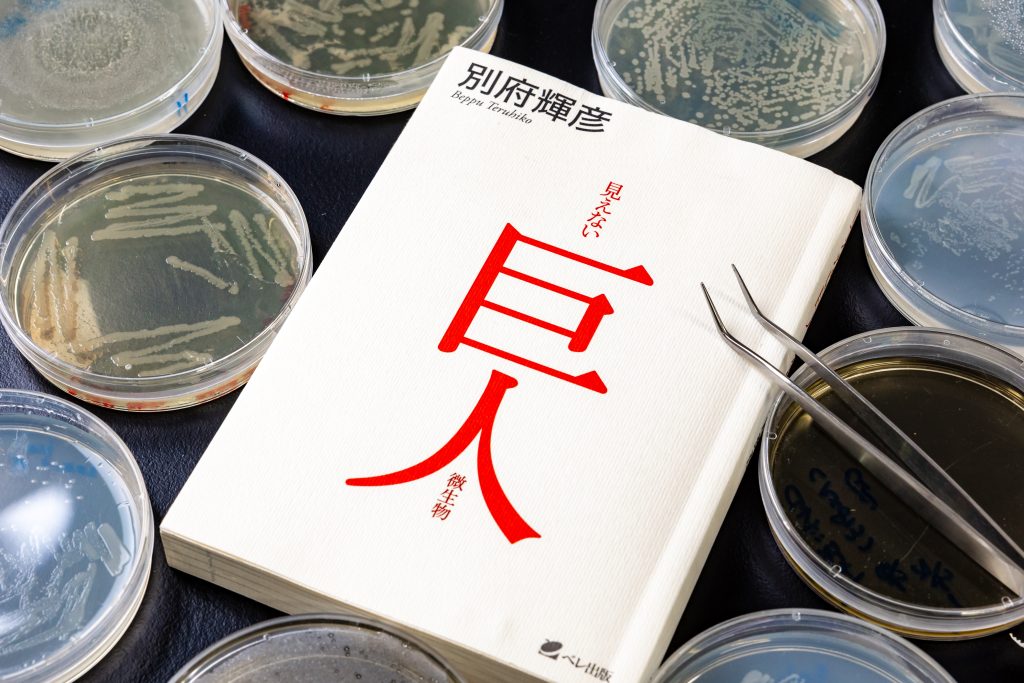
Cellular slime mold is a type of microorganism. Professor Tamao Saito of the Faculty of Science and Technology has been conducting research into the relationship between a chemical substance produced by this slime mold and root-knot nematode, an agricultural pest. She talks about the characteristics of cellular slime mold and its potential for controlling pests.
Microorganisms are small organisms invisible to the naked eye. My research focus on a microorganism found in soil known as “cellular slime mold.” It usually occurs as a unicellular amoeba, around 0.01 millimeter in size, that eats bacteria. However, when the food source was depleted, the amoebae gather to form a multicellular organism, changing shape to survive. I have been fascinated with this organism since I first encountered it. It offers hints on understanding the process of evolution from unicellular to multicellular organisms.
Soon after becoming a researcher, I had the opportunity to analyze the genome of the slime mold at a genome project that became an international joint research project. It was found that cellular slime mold makes various chemical substances. In subsequent studies, I discovered that one of these substances has the property of repelling the parasite root-knot nematode, an agricultural pest.
How cellular slime mold repels pests in soil

The root-knot nematode larvae infect roots of many common vegetables and fruit-bearing plants. They are annoying organisms that cause root-knot galls. Roots with galls are prevented from absorbing nutrients, resulting in poor growth, and leading to bad harvests and wilting of crops. In recent years, damage from root-knot nematodes has occurred all over the world, and is said to cause around 10% loss in global agricultural production annually.
Therefore, I proposed a research project to the Japan Science and Technology Agency to see whether cellular slime mold could be used to control root-knot nematodes. The proposal was accepted, and right now we are on the next stage of the project, conducting joint research with the private sector.
I became interested in the effect of slime mold after conducting in an experiment while studying in the United Kingdom as a visiting researcher. When soil filtrate was poured into a petri dish containing bacteria, the cellular slime mold in the soil reproduced. The nematodes always came along with the cellular slime mold but, as they feed on bacteria and mold, the slime mold does not get eaten. “Are these two organisms compatible or incompatible? What kind of relationship do they have?” These are the questions that drove me as I embarked on my research.
A friend of mine, who is also a researcher, gave me some root-knot nematodes and when I incubated them with slime mold in the same petri dish, it produced some unexpected results. There are many species of nematodes found in soil. Of these, non-parasitic nematodes, those that seek out food on their own, would move close to slime mold, while root-knot nematode, a parasitic nematode, would do the opposite: Even though they are both nematodes, their relationship with slime mold is different.
But why? Fully grown non-parasitic nematodes measure around one millimeter in size and will pick up spores from slime mold fruiting bodies nearby. However, as nematodes also inhabit shallow soil, even if the slime mold gets taken along, the destination is safe. On the other hand, root-knot nematodes burrow deep to reach the roots of plants. If the slime mold is taken along, it cannot survive. This could be interpreted to explain why they were so keen to avoid one another in my experiment.
Toward unprecedented application of cellular slime mold
In any research, I am constantly asking myself what needs to be answered here. Once I know the question, then the real fun begins. Thinking of all the methods I could try to find an answer is where it gets exciting, and what motivates me to keep going to find a solution.
There are many drugs that use the effects of microorganisms – from the antibacterial drug penicillin made from blue mold to ivermectin from ray fungi. It is only recently that we came to understand the workings of cellular slime mold and there is almost no research leading to practical application.
From the perspective of crop safety and the environment, the less chemical pesticides used in agriculture, the better. Currently, root-knot nematode is controlled mainly through chemical pesticides. Cellular slime mold, however, not only deters root-knot nematode without killing it, but is environmentally friendly. It is a method that supports Sustainable Development Goals (SDGs), and I hope one day to make its practical application a reality.
The book I recommend
“Mienai Kyojin—Biseibutsu” (Invisible Giants—Microorganisms)
by Teruhiko Beppu , Beret Publishing Co., Ltd.

This is an introductory volume on microbiology that consolidates the effects and behaviors of various species of microorganisms. Microorganisms may be invisible, but they coexist with us, both in our bodies and in the environment. This book sheds light on how these microorganisms help us.
-
Tamao Saito
- Professor
Department of Materials and Life Sciences
Faculty of Science and Technology
- Professor
-
Graduated from the Department of Biological Sciences, School of Science, Hokkaido University, and received her M.S. and Ph. D in Science at the university’s Graduate School of Science. After serving as assistant professor at Hokkaido University’s Graduate School of Science, became an associate professor at Sophia University’s Faculty of Science and Technology before assuming current position in 2014.
- Department of Materials and Life Sciences
Interviewed: May 2022